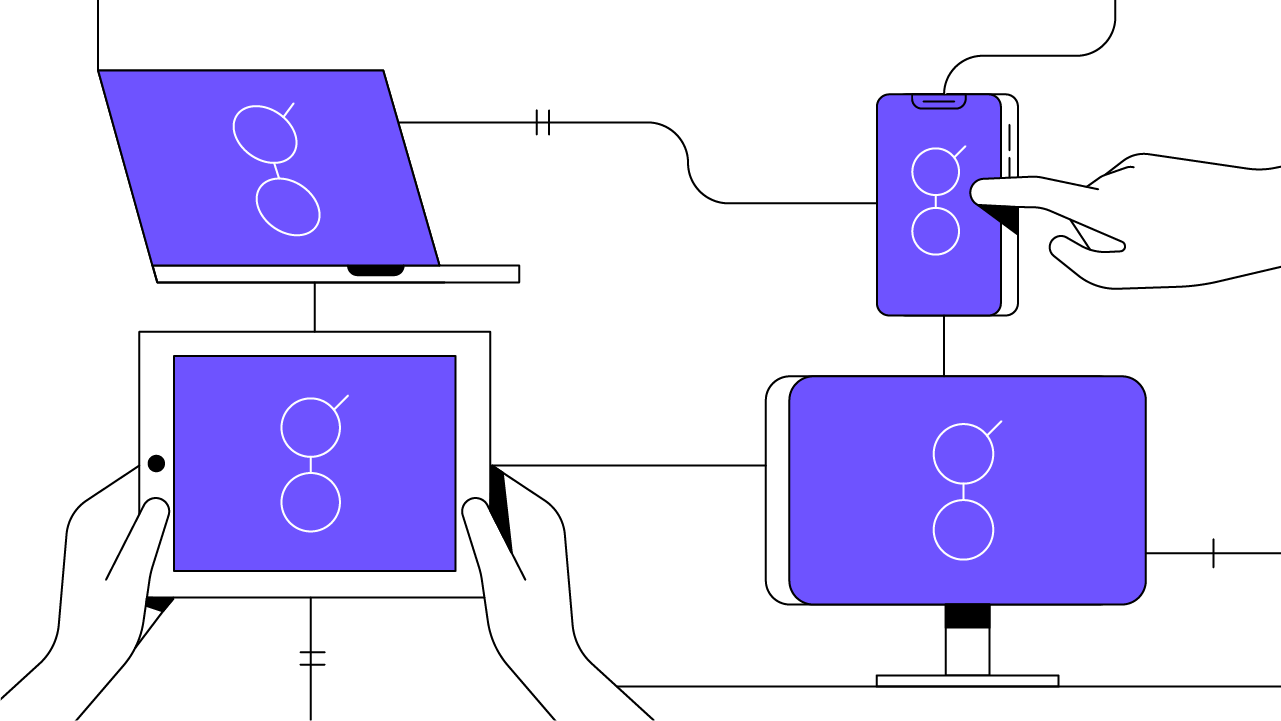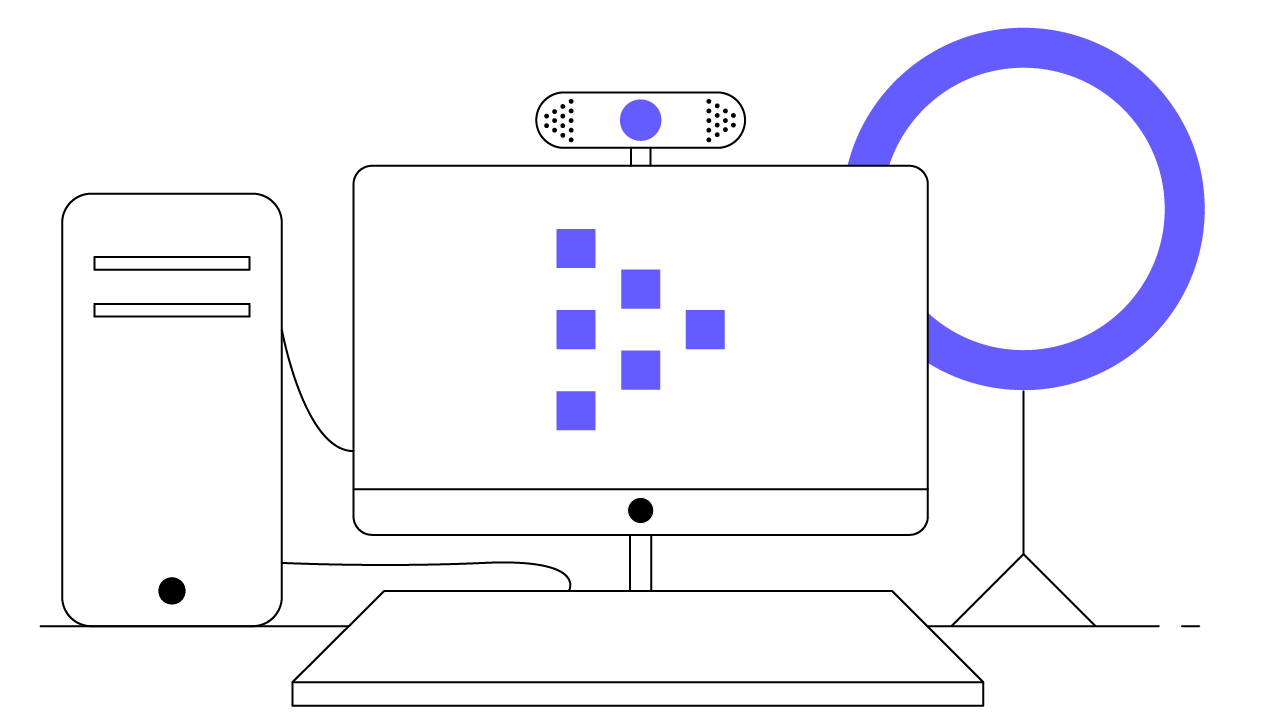Contents
The Render Network (RNDR): Decentralized 3D Rendering
The Render Network is a peer-to-peer GPU marketplace that lets users contribute computational power to 3D rendering projects and earn crypto in return.
By Jules Urbach, Founder & CEO, The Render Network
Updated October 5, 2023 • 4 min read

Summary
The Render Network is a blockchain and crypto-enabled project that enables individuals to contribute unused GPU power to help projects render motion graphics and visual effects. In return, users receive Render token (RNDR), the network’s native utility token. By creating a peer-to-peer (P2P) network upon which people and businesses can tap into underutilized computational power cheaply and efficiently, Render greatly simplifies the standard processes of rendering and streaming 3D environments and other visual effects. As a result, the project is an essential building block for next-generation digital products and services in the metaverse.
3D Rendering Powers the Crypto Metaverse
From animated movies and online gaming to the crypto metaverse, most popular forms of digital entertainment rely heavily on motion graphics and three-dimensional (3D) visual effects. 3D graphics also have a variety of industrial applications ranging from product prototyping and simulation to scientific and architectural visualization. Growing demand for high-definition user experiences has also greatly increased the need for 3D rendering, which is the process by which a device’s graphics processing unit (GPU) converts a 3D model into a visual display with texture and detail. This process of converting data into visual 3D graphics requires complex algorithmic calculations, and rendering is arguably the most important and computationally difficult step of the 3D graphics creation pipeline.
The 3D rendering process is further complicated when graphics need to be generated in real-time, as is the case in digital games and virtual reality (VR) environments. As the demand for immersive digital worlds grows, so will the need for the complex computations that make those worlds possible.
What is RNDR? Crypto for On-Demand GPU Rendering
Render is a platform that lets users contribute unused GPU power from their home devices to help projects render motion graphics and visual effects. In exchange, they earn Render token (RNDR), the native utility token of the Render Network. By creating a peer-to-peer (P2P) network upon which people can tap into underutilized computational power cheaply and efficiently, Render greatly simplifies the traditional processes of rendering and streaming 3D environments and other visual effects.
The Render Network solves for three main pain points for its end users:
Scalability: One of the core benefits of Render is its scalable GPU rendering network can be spun up to any size to meet user demands. Render’s decentralized network relies on an automated reputation and job assignment system that can scale with the needs of any project. Render’s open network of vetted rendering service providers presents an efficient alternative to costly localized market solutions.
Optionality: Render Network users have more options, whether they are commissioning a job or farming out their excess GPU power. This allows for enhanced operational efficiency across the board. Many motion graphic artists and businesses that rely heavily on 3D rendering and modeling are hesitant to spend enormous amounts of money on data centers filled with GPUs, particularly since GPUs often become outdated and must be replaced every few years to keep up with the latest data processing requirements. GPU units also require a significant amount of electricity to operate, and many 3D graphics creators and users are based in expensive urban centers with high utility costs.
IP protection: Render provides an effective digital management system built atop blockchain-enabled record-keeping and encryption and OctaneRender-based service completion and scoring. Most existing service options rely on centralized platforms that can censor or delete user data without warning, but Render leverages the immutability of blockchain technology to ensure that creator’s rights are protected throughout their entire creative lifecycle.
Render Network’s Proof-of-Render (PoR) Governance System
The Render Network is built on the Ethereum blockchain and OctaneRender, a rendering application developed by OTOY, which is the graphics software company behind the Render Network. The project’s data verification and payment processes rely on Ethereum, and the 3D rendering work is facilitated and completed using OctaneRender in conjunction with the open source ORBX media and streaming framework for additional rendering efficiency.
Render relies on a multi-tier pricing (MTP) protocol that uses users’ reputation scores to determine job allocation and ensure high service quality. Customers (Creators) can choose from three tiers: Tier 1 (Trusted Partners), Tier 2 (Priority), and Tier 3 (Economy). Tier 1 services are generally completed by more reputable GPU rendering service providers (Node Operators) who charge a higher fee. Creators receive a reputation score based on Node Operator feedback, which determines how many concurrent nodes they can access at any given time. In other words, Creators’ reputation scores influence how quickly their requested tasks will be completed. Similarly, only Node Operators with high reputation scores are allowed to process higher tier jobs, which pay out more RNDR tokens, and top-rated Node Operators are assigned jobs more quickly via Render’s automated job-matching algorithm.
This tiered configuration provides the foundation for the Render Network’s Proof-of-Render (PoR) governance system, which relies on a combination of automated and manual inputs to determine user reputation scores. PoR resembles Proof-of-Work (PoW) in that Node Operators spend computational resources in order to earn crypto tokens, but in Render’s case Node Operators use their computational power to complete complex VFX/3D rendering services instead of solving math puzzles. Render’s pricing algorithms automatically update periodically based on the amount of compute work Node Operators receive based on changes in GPU performance, the current price of GPU cloud rendering from other providers, electricity costs, and network supply and demand patterns.
Every Render Network user has a unique identifier tied to their OctaneRender account, which has built-in Know-Your-Customer (KYC) requirements to prevent fraud and duplicate accounts. Once a job is live, Creators can use OctaneRender to review their Node Operators’ rendering progress in real time and identify processing abnormalities before their job is completed. Creators can review and score Node Operators’ final deliverables frame by frame or in batches, and their feedback will impact the involved Node Operators’ scores. Additionally, the Render Network automatically evaluates active jobs by comparing a Node Operator’s computational potential and a job’s stated requirements, penalizing inefficient Node Operators and rerouting their jobs if there are large disparities between the Node Operator’s OctaneBench service potential and actual output quality.
How to Use the Render Network
The Render Network operates as an automated marketplace, and content creators (i.e. “Creators”) can upload GPU-based rendering tasks to Render which can then be completed by Render’s decentralized network of GPU service providers (i.e. “Node Operators”).
Functionally speaking, Render users follow the process outlined below:
Creating a job: Creators must submit their job in ORBX file format using OctaneRender or a supported plugin/integration, and define key parameters such as graphic resolution, output format, and sample size. Creators can also select which service tier they want based on their job’s priority level and Node Operators’ on-chain performance benchmarks and reputation scores.
Uploading a job: Once a job is uploaded through Render’s OctaneRender web portal, the Creator’s assets are split into individual files that are then encrypted and hashed, which provides end-to-end traceability and makes it easier for the Render crypto protocol to detect and prevent malicious behavior. The job requirements and payment terms are then sent to a smart contract that broadcasts the relevant details across the Render Network.
Assigning a job: Render’s MTP protocol automatically assigns Node Operators to suitable jobs based on each market participant’s reputation scores and the Creators’ specifications. Upon joining the network, Render will automatically assess a Node Operator’s performance capabilities and incorporate this information in its node benchmarking and assignment process.
Completing a job: Node Operators use OctaneRender to process each assigned job, thereby providing Proof of Render work through their computational tasks. Node Operators’ contributions are tied to their unique OctaneRender identifier, and job submission and scoring are also completed via OctaneRender.
Verifying deliverables: Creators can watch their Node Operators’ render progress in real time and flag processing abnormalities or maligned behavior prior to job completion. These previews are watermarked until a job is confirmed, and a Creator pays for work completed. Additionally, Node Operators’ outputs are encrypted.
Completing Payment: All Render payments are held in escrow during a rendering job, and the RNDR tokens are released to Node Operators once a Creator manually verifies that their job has been satisfactorily completed. Render Network receives a small percentage of RNDR tokens for facilitating the transaction and running the Render Network, which ranges from 0.5–5% of the total RNDR needed to process the job, based on the current GPU supply and demand levels. From there, Creators can download or share their rendered assets directly on OctaneRender.
Render Token (RNDR) Tokenomics
All transactions on the Render Network are denominated in RNDR, the ERC-20 utility token used by Creators to pay for on-demand GPU compute provided by Node Operators. RNDR’s total supply is capped at 536,870,912 tokens. RNDR was first released via a public token sale in October 2017, followed by a private sale from January 2018 to May 2018. 25% of the RNDR tokens were sold to the public, 10% were allocated to the RNDR Reserve, and the remaining 65% are currently held in escrow to help modulate the network’s supply and demand flow. The Render Network recently introduced RNDR Credits, which let Creators purchase rendering power on the network using PayPal and Stripe. These Credits are non-exchangeable and only usable on the network. Therefore, even though RNDR token will remain the primary means of exchange for the Render Network, the platform is rolling out more user-friendly ways for non-technical creators to tap into these decentralized services.
Render Network’s decentralized GPU-sharing network can benefit a vast and impressive spectrum of industries and use cases. Unlike projects that claim to be all-encompassing blockchain solutions that users can build anything on, Render has focused on one specific sub-sector — GPU rendering power — and is providing a democratized solution to the burgeoning computational needs of the digital realm.
Cryptopedia does not guarantee the reliability of the Site content and shall not be held liable for any errors, omissions, or inaccuracies. The opinions and views expressed in any Cryptopedia article are solely those of the author(s) and do not reflect the opinions of Gemini or its management. The information provided on the Site is for informational purposes only, and it does not constitute an endorsement of any of the products and services discussed or investment, financial, or trading advice. A qualified professional should be consulted prior to making financial decisions. Please visit our Cryptopedia Site Policy to learn more.

Author
Jules Urbach
Founder & CEO, The Render Network
Jules Urbach is the founder and CEO of The Render Network. Jules is widely hailed as a leader in computer graphics, streaming, 3D rendering, and cloud computing with over 70 patents and 25 years of industry experience. He is also the founder and CEO of OTOY, a pioneer of Academy-Award winning GPU cloud graphics and CGI technologies. Jules sets the strategic direction and vision for the company, and is the chief architect of OTOY’s technology roadmap. Prior to OTOY, Jules created the web’s first 3D video game platform and licensed the software to Macromedia, Disney, Warner Brothers, Nickelodeon, Microsoft, Hasbro, and AT&T.
Is this article helpful?


